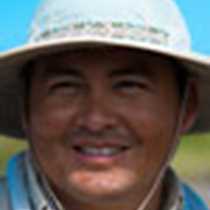Española Island
Today we lived a dream! For our guests Española Island was a dream come true. Kayaking, hiking, and snorkeling were the choices we offered our guest to enjoy the wonders of one of the oldest islands in the Galápagos archipelago. Española is located in the extreme southeast of the archipelago and is considered to be approximately four million years old; two spots are especially popular with visitors, Gardner Bay, which has a lovely white-sand beach and Punta Suarez, which is a must do because of its varied bird-life.
Our morning outing started early when many early risers joined us for an early kayaking along the peaceful coastline of Gardner Bay. Several species of shore bird such as lava herons, gulls, brown pelicans among others were sighted by us. After an unforgettable moment we headed back to the National Geographic Islander for a well-deserved breakfast. After couple of hours we suited up for snorkeling while other opted to go to the beach. The underwater realm offers a great variety of tropical fish. King angelfish, wrasses, parrotfish, barracudas, and even immature sea lions were surrounding us while we were delighted with a magical moment. The morning outing ended on a pristine white sand beach where hundreds of sea lions were basking in the equatorial sunshine.
In the afternoon we entered another world; iguanas bask on the rocky shorelines like carved prehistoric dragons while sea lions where playing on the soft sand that makes up the small beaches in the disembarking area of Punta Suarez. Our walk took over two hours over rocky terrain. As expected birds peck around our feet with no more fear than a barnyard flock. Punta Suarez is one of the richest wildlife locations in Galápagos Islands and the unique experience that we all had this afternoon will remain in our minds for the rest of our lives. After walking for several minutes through a dense vegetation mainly of yellow cordia we found blue-footed and Nazca boobies and few of the endemic species in Española Island, the waved albatrosses as well as mockingbirds and lava lizards.
Along of the breezy cliff edge we spotted swallow-tailed gulls and many other seabirds soaring on the wind. In addition, Galápagos hawks, which are the top predator in Galápagos, were located in the area. Later, due to the right tide and swells be enjoyed a powerful blowhole blasts while the sun was setting at the horizon. A minute of silence was encouraged in this magical place, where the songs of the Mother Nature through birds and braking waves delighted us. An outstanding day in paradise paid off.




